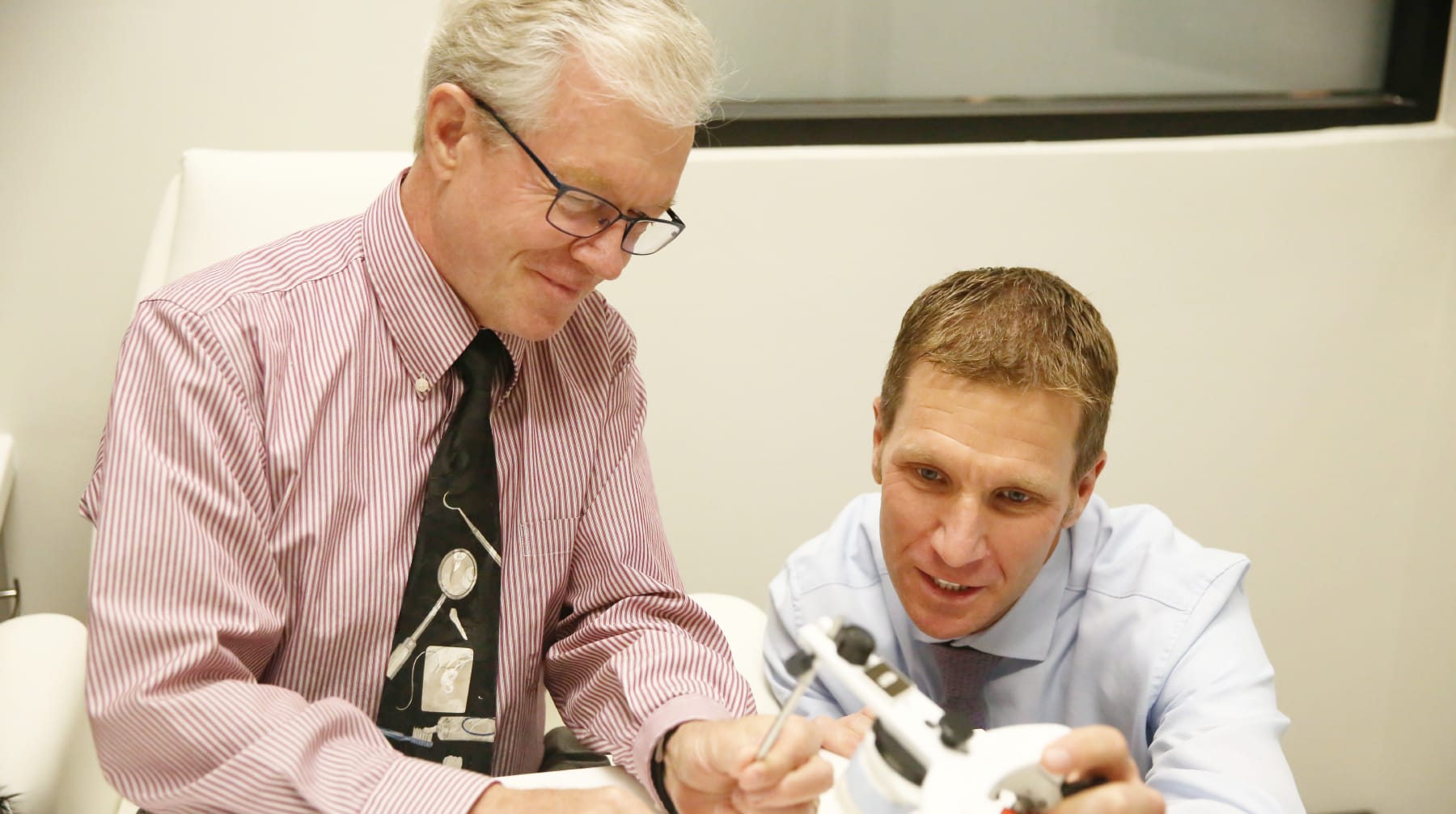
Did you know that 92% of adults have tooth decay? Chances are if you haven’t personally struggled with tooth decay, you probably know a close family member or a friend who has!
Tooth decay is often referred to as caries or cavities. It is when there are damaged or broken down areas of tooth structure due to acids that are made by bacteria. While it sometimes can feel like cavities develop overnight, they actually follow a series of distinct stages. As your dentist in St George, we want you to have the information that you need to help avoid getting cavities. It can be helpful to understand the stages of tooth decay because overtime the stages do progress. If we can catch decay in its beginning stages, it is actually reversible.
- Stage 1: Demineralization
- Stage 2: Enamel Decay
- Stage 3: Dentin Decay
- Stage 4: Infection
- Stage 5: Abscess Formation
Stage 1: Demineralization
The first stage of tooth decay is known as demineralization. This stage is also referred to as incipient decay or more commonly, “white spots”. In this stage, we see the first signs that a tooth is under attack by the acids because a whitish spot will develop on the tooth. This white spot is caused by bacteria that sits on the tooth for too long. The bacteria consume sugars in the food and drinks that we consume and produce an acidic byproduct which works to weaken the tooth’s structure.
The good news is that while in this first stage, tooth decay is still reversible. Good brushing, daily flossing, and limiting food and drink exposure can reduce the amount of acid present by helping to control the bacteria. While our saliva helps to naturally remineralize our teeth, using a fluoride treatment can provide additional mineral uptake. Thus, strengthening the tooth and preventing the cavity from progressing to the next stage.
Stage 2: Enamel Decay
The second stage of decay is known as the enamel decay. By the end of this stage, the decay has broken through the enamel layer of the tooth and it is no longer reversible. Discoloration of the tooth may be evident and in an x-ray, this area of the tooth will appear darkened. It is possible that there may be some sensitivity at this stage of decay, but there also may be no sensitivity at all. Proper treatment would be to see your dental professional so that this cavity doesn’t progress to the next stage. Treatment will depend on the severity and the location of the enamel decay, it may include filling(s) or a crown.
Stage 3: Dentin Decay
In this stage, the decay has now progressed into the dentin layer. The dentin layer is the next layer past the enamel. Dentin is much softer than enamel, so once decay reaches this layer it will spread more quickly. Treatment will need to be done in a timely manner as this is the final layer of the tooth before the pulp. In this phase, there is a greater chance of one feeling sensitivity because the decay has progressed closer to the nerve that lies within the center or pulp of the tooth.
Stage 4: Infection
Once the cavity reaches the pulp, a tooth is now infected. If someone wasn’t aware that they have a cavity, they usually realize that there is a problem at this stage. This stage is often painful and once the decay has reached this stage it is serious. The tooth will need a root canal if the tooth is going to be saved. For more details, please visit our services page to learn more about the treatment and services that we have to offer.
Stage 5: Abscess Formation
In this stage of tooth decay, the infection has worked its way through the tooth and has now reached the tip of the root. The pressure of the infection causes it to exit the tip of the tooth’s root. Infection in this phase often moves into the surrounding gum tissue and may even cause the tongue to swell. It is possible that the infection may affect surrounding bone, additional surgery may need to be performed if it progresses this far. As you can see, treatment is much more involved by this stage. It may be possible to still save the tooth at this stage, but sometimes the best treatment is extraction.
When it comes to tooth decay, catching it early is always key. In its beginning stages, there are things that you can do to reverse the process and hopefully avoid more involved treatments such as fillings, crowns, root canals, or even an extraction. One of the best things that can be done is to regularly visit your dentist in St George for routine cleanings and evaluations so that decay is caught early. To schedule your next appointment, call us or set up and appointment with our online scheduling system.






 (435) 656-4441
(435) 656-4441 826 S 3000 E Ste 2
826 S 3000 E Ste 2
Leave a Reply